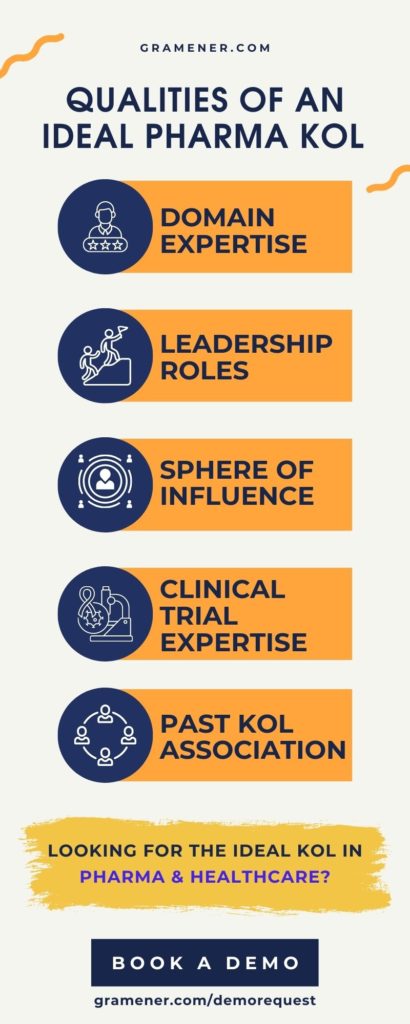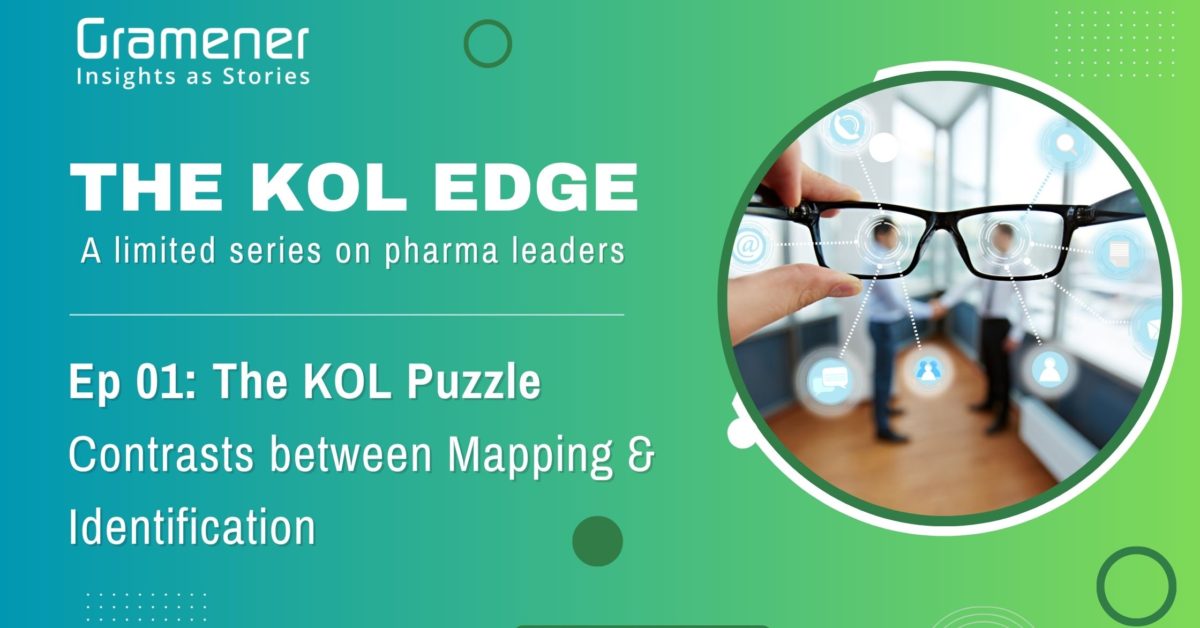Key Opinion Leaders (KOLs) offer invaluable benefits to pharmaceutical companies in developing new treatments or drugs. They provide intellectual and academic guidance during clinical trials, vastly improving success rates. To know more, check out our detailed article on what is a KOL and how to identify them.
They also help market the launch of a new drug or treatment, especially within the medical fraternity.
This article will cover the finer details of the KOL mapping approach vs. the KOL identification approach and how they help pharmaceutical companies establish their key opinion leader strategy.
Table of Contents
What is KOL Profiling?
Pharma KOL profiling helps healthcare and life sciences companies find expert Key Opinion Leaders to enable them to achieve their business objectives. Companies use quantitative methods to profile KOLs at a global, national, and regional level.
Organizations profile individuals based on their expertise in niche medical domains and spheres of influence. It helps companies engage Health Care Professionals (HCPs) who can create awareness about a new drug or treatment within the medical fraternity.
This facilitates the quick adoption and commercialization of a new offering in the market. KOL profiling also helps businesses target doctors with domain knowledge to collaborate on clinical trials.
What is KOL Identification?
KOL identification requires companies to recognize domain experts with a sphere of influence within a specific geography before engaging them to develop and market their offerings.
To identify KOLs who can benefit their interest, organizations track HCPs who regularly speak at scientific meetings and important medical congresses.
They also monitor medical practitioners whose works are published in respected journals and are frequently cited by well-known media outlets as clinical experts.
What are the Qualities of an Ideal Pharma KOL
Today, pharmaceutical companies employ data-driven technology and quantitative methods to profile and identify key opinion leaders in the healthcare industry.
They target HCPs who possess one or more of the following attributes:

- Domain experts: Researchers and authors of national significance with publications and citations in authoritative sources like PubMed, etc.
- Leadership roles: Physicians in leadership roles in advisory committees or boards such as the American Rheumatism Association, American Heart Association, American Society of Clinical Oncology, National Comprehensive Cancer Network, etc.
- Sphere of influence: KOLs active on social media platforms like Twitter, YouTube, etc., are also known as Digital Opinion Leaders (DOLs). DOLs have a much larger sphere of influence than traditional KOLs and can help companies gain immense traction online.
- Clinical trial expertise: Principal investigators (PIs) for clinical trials who can guarantee the success of the drug development process.
- Previous KOL association: HCPs with previous experience as KOLs are familiar with what is expected of them and how to deliver the same.
What is KOL Mapping?
KOL mapping is a quantitative approach to finding KOLs at a national, regional, and local level. It helps spot HCP leaders based on their influence within the medical community.
KOL mapping enables pharmaceutical companies to sieve out HCPs who do not meet their requirements in favor of those who do. It allows organizations to categorize KOLs based on location, specialty domain, influence, etc.
KOL mapping allows companies to assess the viewpoints of KOLs on a particular medical topic or opinion. Businesses use mapping to evaluate the influence and alignment of KOLs with their objectives. It enables them to create a tiering model and assign scores to KOLs, helping them to narrow down their list of target leaders.
How is a KOL Different from a Social Media Influencer?
67% of doctors use social media for medical information. Practicing and qualified physicians influence and communicate extensively with an online community of patients and HCPs. These social media influencers are called Key Online Influencers (KOIs).
Many HCPs have taken advantage of digital channels to discuss and debate healthcare issues and share information to benefit the patient and the medical community. Consequently, KOIs has built a large online following which they influence through interaction and engagement.
Pharma marketers have realized that if they can nurture the correct KOIs, they can develop a mutually beneficial relationship that can favor the KOIs and also help achieve the business objectives.
What are the Differences in Profile Between KOIs and KOLs
| Key Online Influencer (KOI) | Key Opinion Leader (KOL) | |
| Medium | Social media & online channels | Advisory Boards, Conferences, Medical Journals |
| Network | Online followers | The Medical Fraternity |
| Sphere of influence | Large following | Much more targeted |
| Operating domain | Large range of topics | Scientific/Medical |
| Identification mechanism | Social media analysis | Reputation within the medical & patient community, word of mouth |
KOL Mapping vs. KOL Identification
KOL identification and KOL mapping are often used as loosely interchangeable terminologies. While they complement each other, they are also distinctly different.
KOL identification involves identifying those that can impact your work – tech medics building cutting-edge apps, tweeters, nurses, speakers, authors, clinicians, etc. It is designed to recognize the speakers and clinicians who best serve your commercial and medical objectives.
KOL mapping considers the people, relationships, and connections within the larger ecosystem where you are trying to release your drug and make it a success commercially. It puts into context your overall KOL strategy and way forward.
Gramener’s KOL Identification Solution for Pharma Companies
One of our top pharma clients wanted to compare industry experts across parameters. They were looking for an automated KOL management application to assess KOLs based on digital presence, the sphere of influence, subject matter expertise, etc.
Using techniques like NLP, variable associations, and clustering, Gramener created a dashboard that helped align sales leads and arm them with the correct information, leading to an increase in KOL satisfaction and NPS scores and a decrease in rejections.
It also broke down communication barriers between the sales and marketing teams by up to 15%.
Conclusion
The advent of digital channels has drastically increased the reach and influence of traditional KOLs. It promises to deliver more exciting and interesting collaborations with the pharmaceutical industry shortly.
Connect with us if you want to transform your KOL identification, mapping, and profiling operations using data and analytics.

